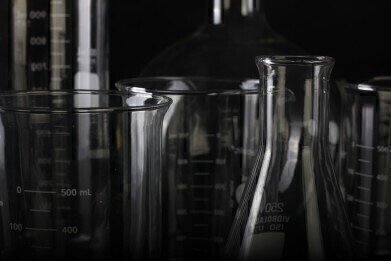GC, MDGC
What Is Multidimensional Chromatography?
May 01 2015
Multidimensional chromatography is a chromatographic technique which is capable of delivering heightened separation performance for complex and difficult substances. It achieves this by passing the sample through two different separation stages. This is achieved by using multiple columns, each with a different stationary phase.
By positioning these columns at right angles to each other, it is possible to selectively choose elements from the first column and transfer them to the second column for more thorough separation. The presence of this second column allows for the separation of more complex substances which cannot be thoroughly processed through the use of a single column alone.
Multidimensional chromatography can be applied in either gas or liquid chromatography. All that is required is that a distinct separation phase is used in each column. Up until now, various different combinations of separation phases have been combined to produce improved results.
Why the Need for Multidimensional Chromatography?
There are a whole host of highly complex mixtures which are desirable to be separated for qualitative and quantitative analysis, but simply can’t be due to their complex nature. They can, of course, be separated to some extent through a unidimensional chromatography process, but even in optimum conditions and with the most efficient column, full separation from single column chromatography will never be achieved.
However, by combining two different chromatographic separations stages, which have different selectivities for the desired analytes, these mixtures can be more effectively broken down. This is best achieved by preserving the sample after an initial separation, then transferring that sample to a second dimension for additional analysis.
Multidimensional chromatography can be used for a wide variety of applications, including:
- Identification of proteins and peptides
- Identification of DNA fragments
- Determination of biomarkers in petroleum and oil
- Drug isolation in urine
- Drug isolation in plasma
- Refinement of surfactants
Multidimensional Chromatography: Then and Now
The first recorded use of multidimensional chromatography is believed to have been conducted by R. Consden, who successfully separated out 22 hydrochlorides from amino acids using paper chromatography.
Two-dimensional thin-layer chromatography (2D-TLC) was pioneered by Justus G. Kirchner and soon became the preferred technique for separating complex substances. Subsequently, innovations were made in the field of two-dimensional gas chromatography, which was followed by liquid chromatography in 1978. The discipline was detailed by F. Erni and R. W. Frei, who set out the fundamental principles involved in 2D-LC. In 1990, M.M. Bushey and J.W. Jorgenson published their hugely influential work Chromatography of Proteins, which took the technique a few more steps forward.
In the last decade, great strides have been made in the practice and it is now considered in all realms of the scientific world. Indeed, it has been made one of the three core principles at the upcoming 42nd International Symposium on High Performance Liquid Phase Separation and Related Techniques. The event will take place from June 21st to 25th in Geneva, Switzerland, and promises to examine the field of multidimensional chromatography in a series of talks, lectures and exhibitions.
Events
May 11 2025 Vienna, Austria
May 18 2025 Tempe. AZ, USA
May 21 2025 Birmingham, UK
Jun 01 2025 Baltimore, MD, USA
Jun 15 2025 Bruges, Belgium














